Korean BBQ
by Ross Bowen, Tastemaker in Residence
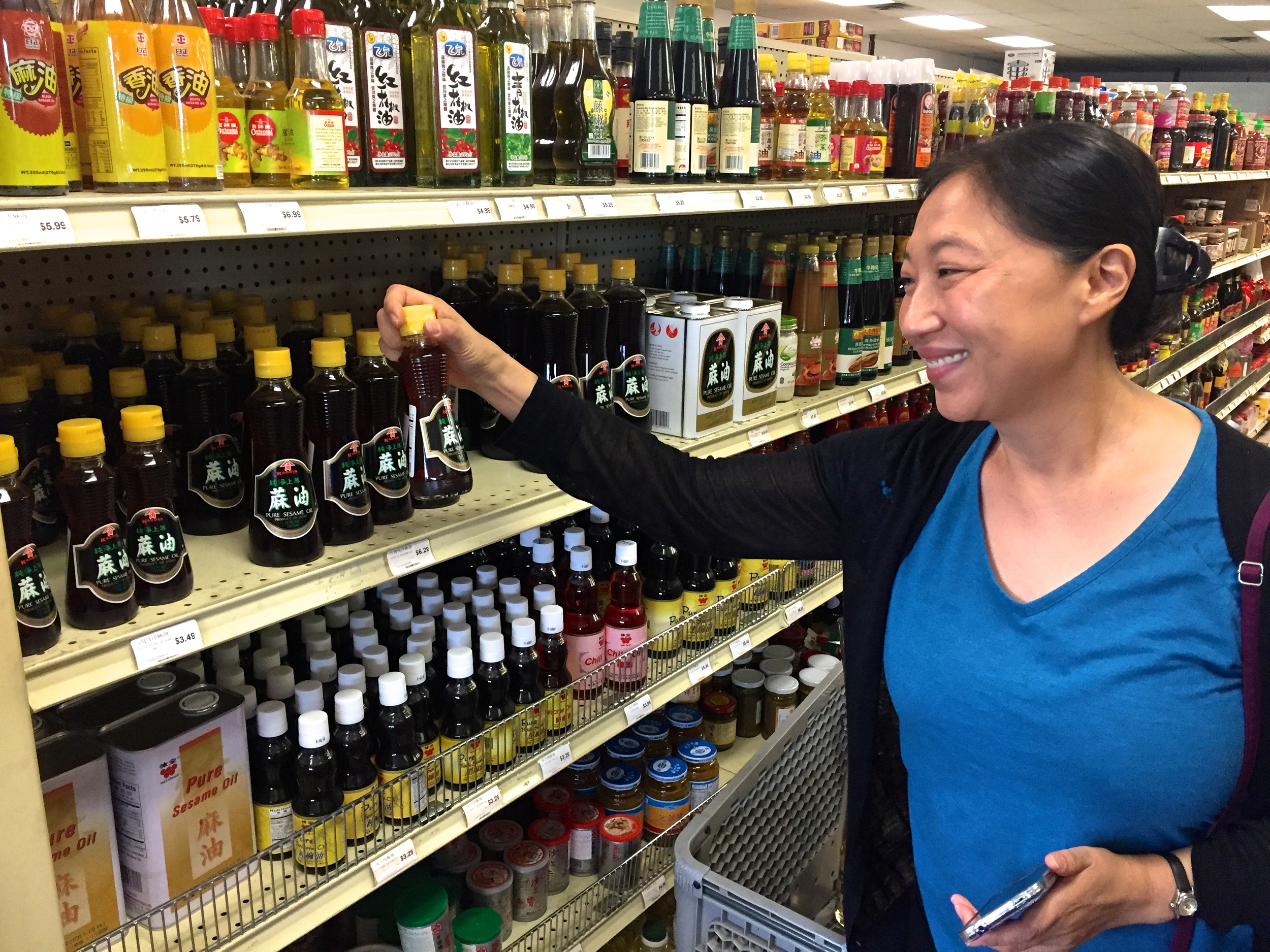
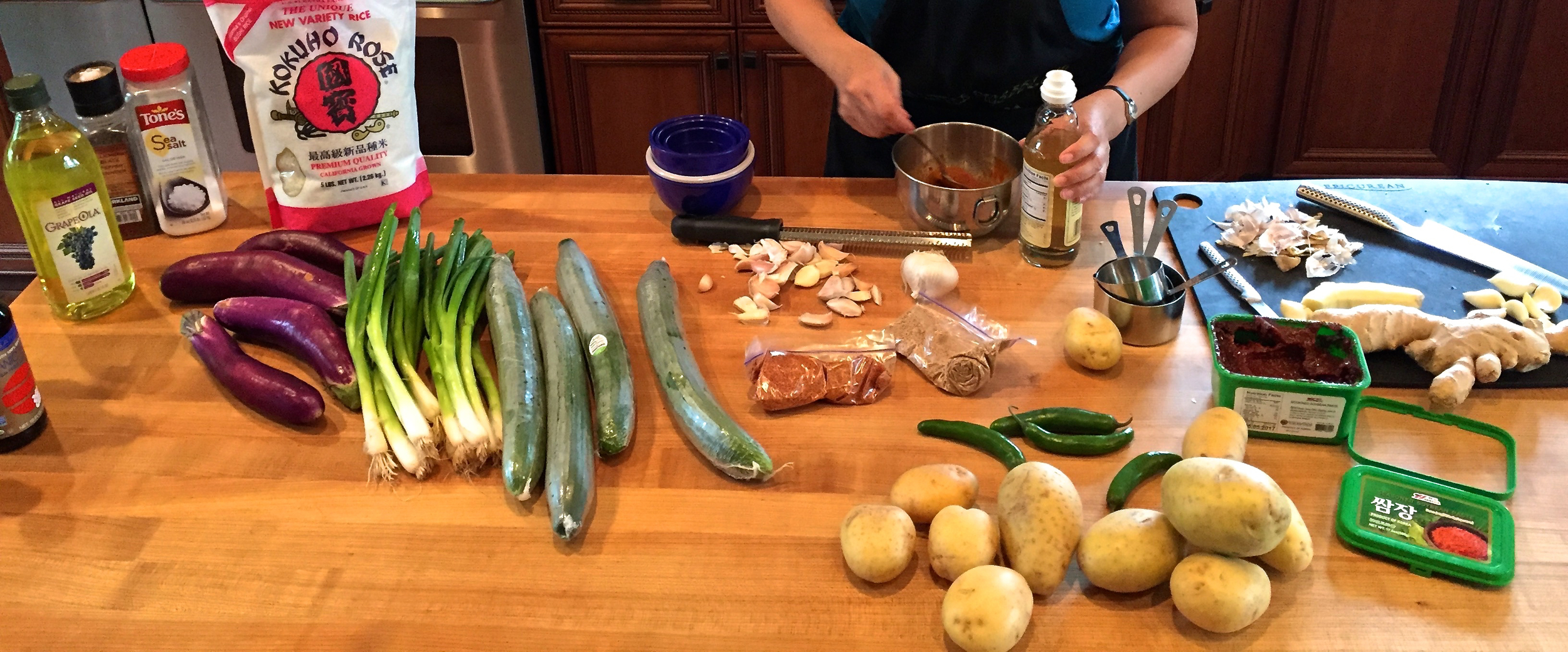
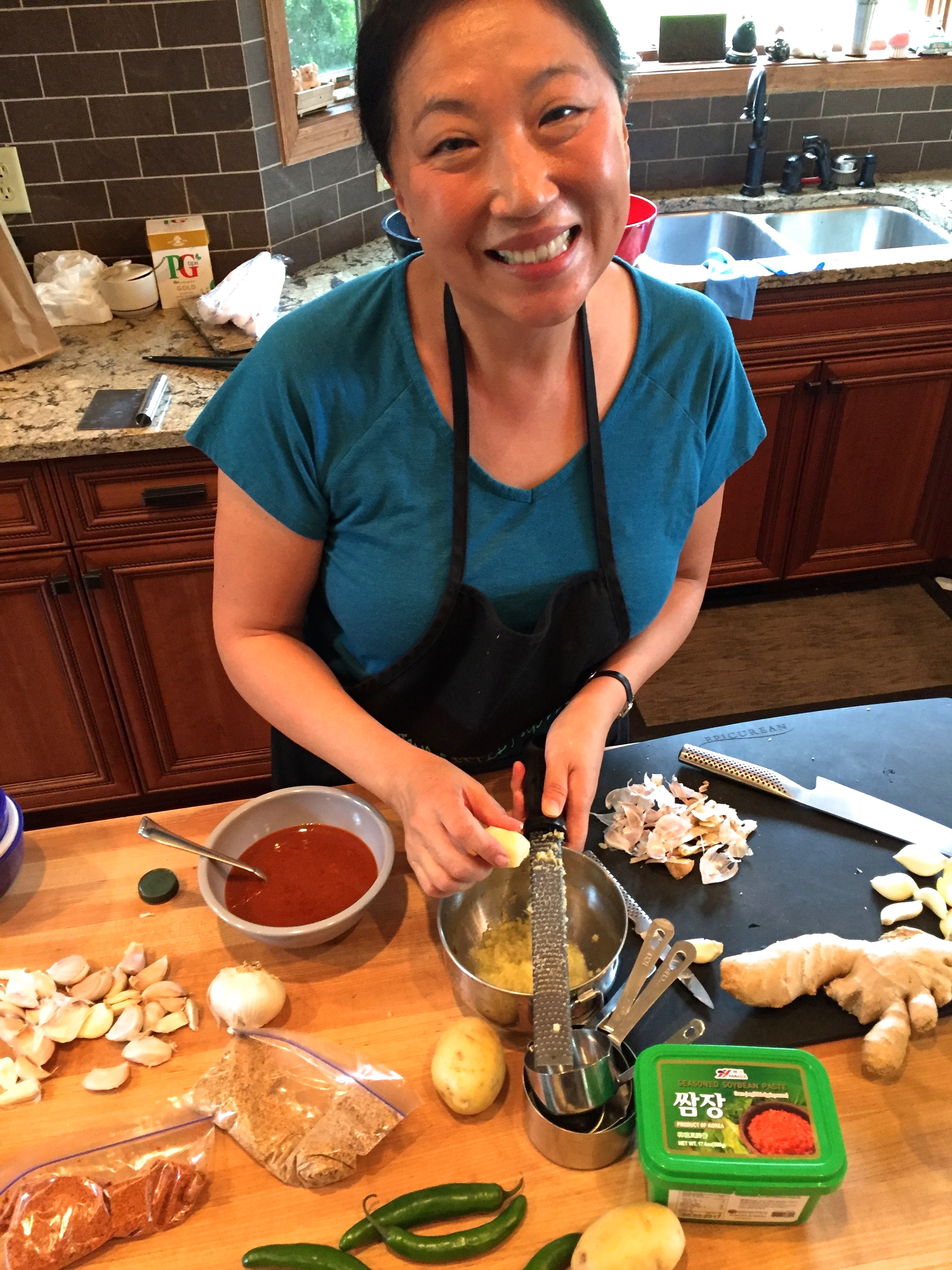
We received a lesson in Korean cooking last week from our friend Gina Dokko, who was visiting from Caifornia. She was born in Seoul and once lived in the Twin Cities Her parents emigrated when she was two. Her Mother has always been an excellent cook, and Gina learned her cooking chops from a young age. The family opened a Korean grocery store, East Oriental Food Store, in Monroeville, PA in the late 60’s. Gina learned her Mother’s lessons well, as we saw while helping and learning while she prepared a fantastic meal.
Korean food is centered around rice and meat, alongside Banchan. Banchan means accompaniment, and might be thought of as similar to tapas. The “B” in Banchan is pronounced like a combination of a “b” and a “p”, and there is no comparable sound in English.
Gina took us shopping with her to the local Asian food store. It is handy to handy to have Korean reader in a store like this, but most things do have English translations. Gina shops without a list, because she doesn’t know what she will prepare until she sees what is fresh. Remember, is season = freshest = cheapest. She does believe the recommendation not to shop hungry, however.
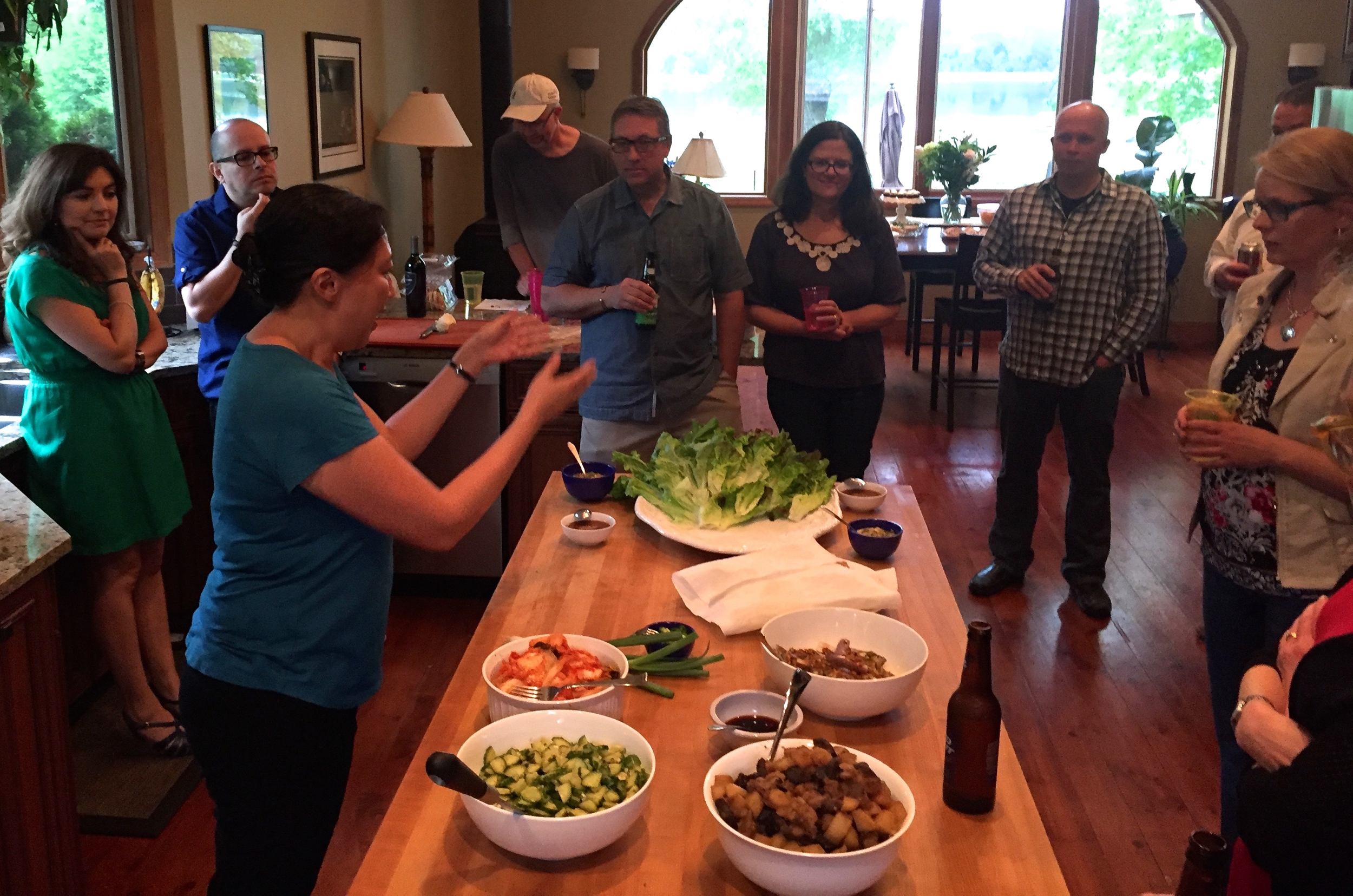
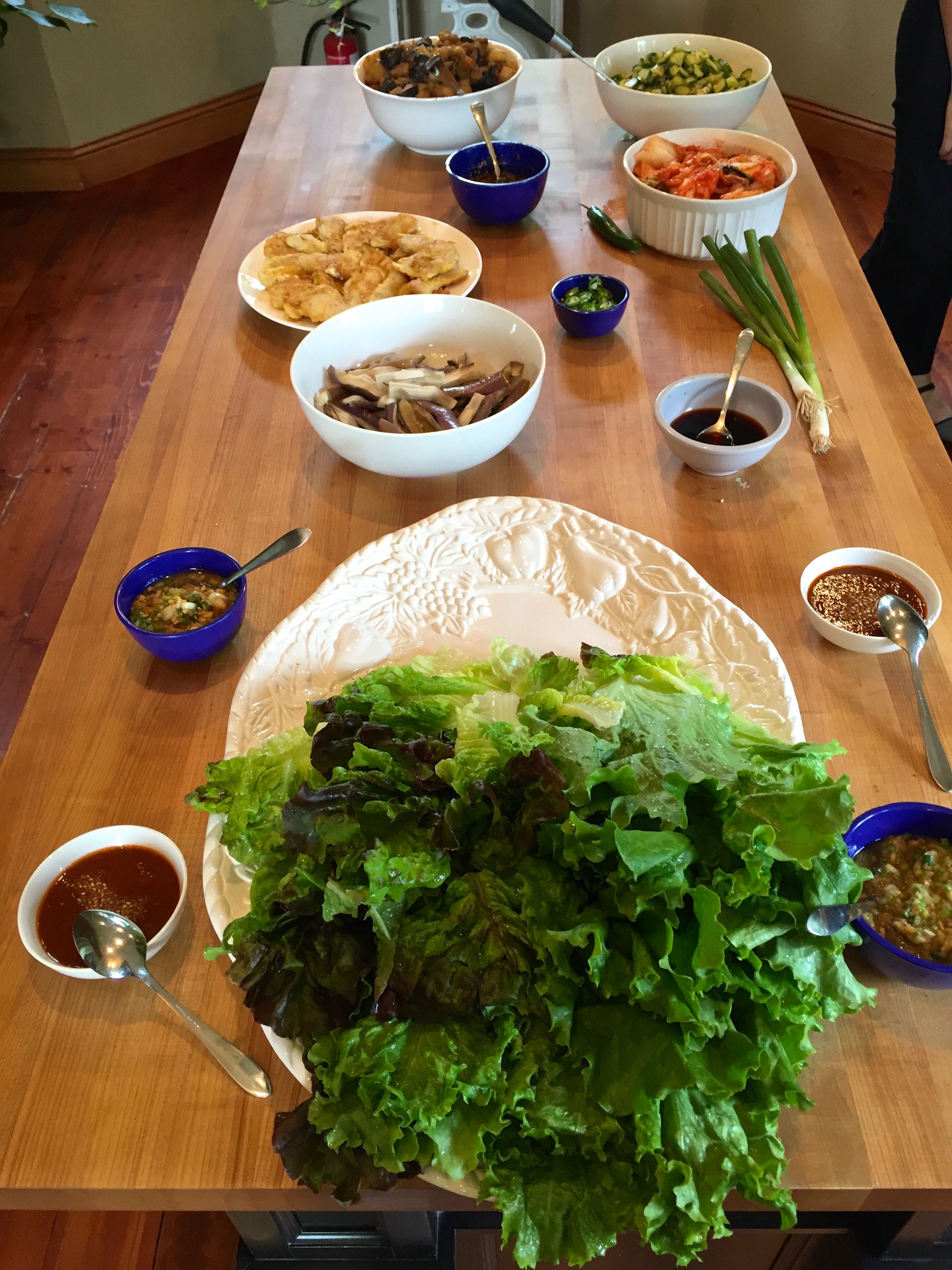
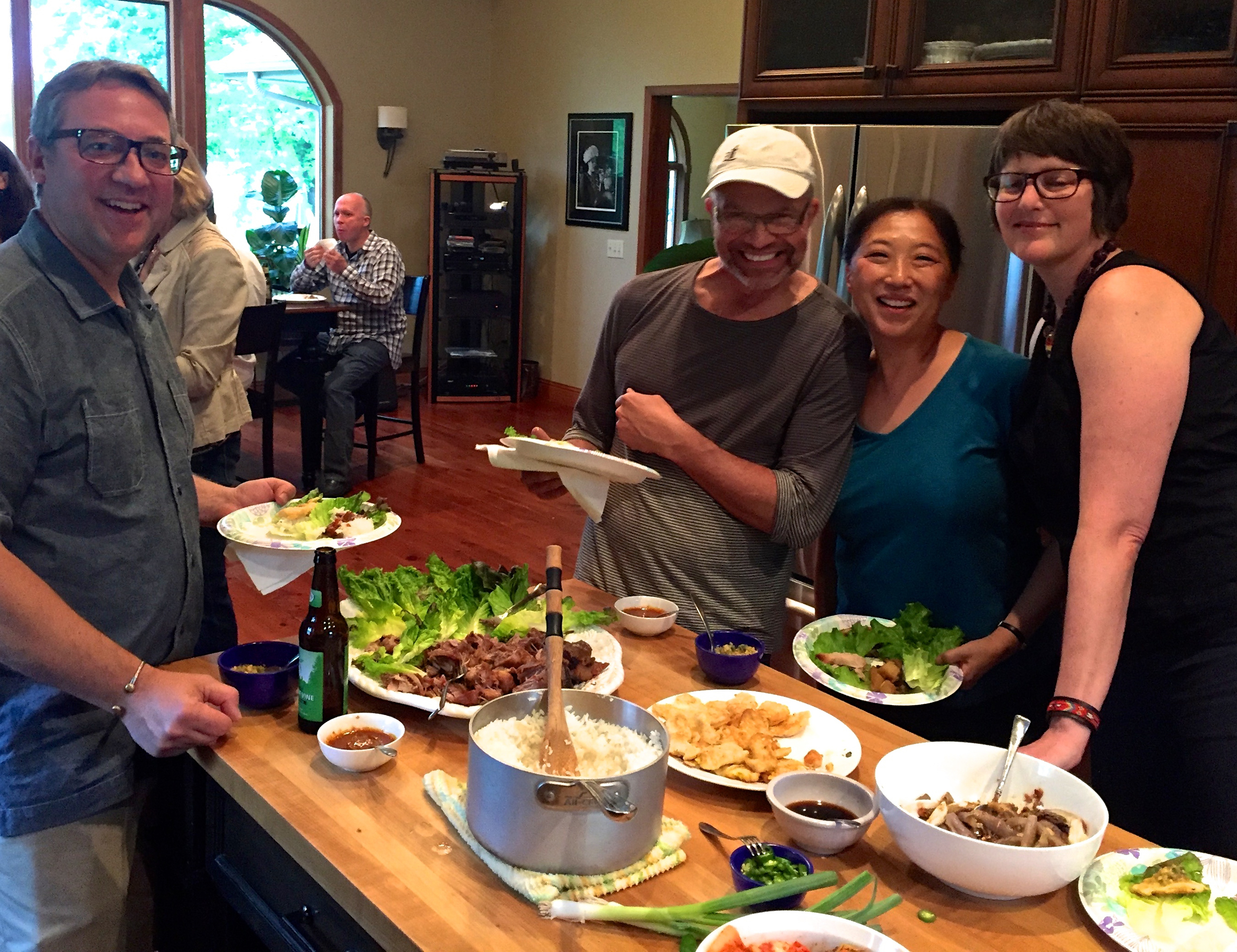
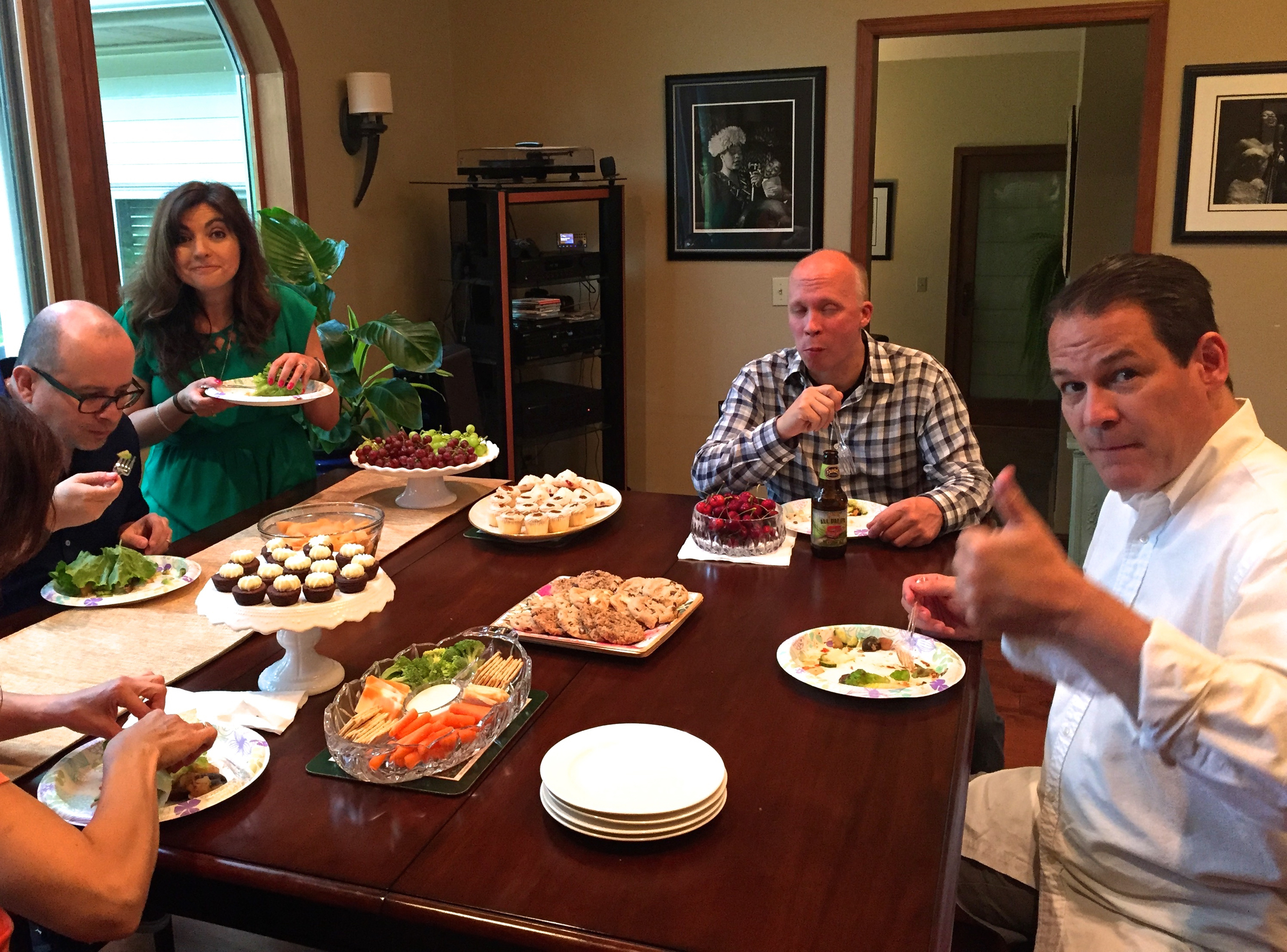
We cooked for several hours for the party we had for Gina. It was a reunion of sorts, as a number of her friends from her time here came over. I had started a pork butt the day night before. Along with sticky (sushi) rice and large leaves of lettuce, this formed the base of the meal, around which we plated the Banchan.
The Banchan we prepared were cucumbers in rice wine vinegar, eggplant, and braised potatoes and shitake mushrooms, along with two sauces, a ginger scallion sauce and Ssam sauce,
Pork
Whole bone-in pork butt
1 cup sugar
1 cup salt
1 cup brown sugar
The night before, or the morning of, cover the pork butt in the salt and white sugar. Seal with plastic wrap and place in refrigerator.
Heat over to 300 degrees. While heating, rinse the salt and sugar off the pork. Get most of it off, to avoid excessive saltiness.
Place in a roasting pan and bake for six hours. Rotate the pork over in the accumulating juices and baste every so often, to keep it from drying out.
Twenty minutes before serving, cover the pork in the brown sugar and increase the heat to 500 to caramelize the sugar.
Remove and place on a serving dish. During the meal, the guests will use a fork to pull off the tender shreds of meat for their plates.
Ginger Scallion Sauce
1 cup thinly sliced whole scallions
¾ cup peeled and minced ginger
¼ cup grapeseed oil
3 cloves chopped garlic
1 tsp sesame oil
2 tsp soy sauce (we substituted Tamari sauce because a guest had a soy allergy)
1 tsp rice wine vinegar
kosher salt to taste
Mix all ingredients well and set aside
Ssam sauce
2/3 cup Ssamjang (fermented bean and chili paste)
1 tablespoon chili paste
1/3 cup rice wine vinegar
1/3 cup grapeseed oil
Mix well and set aside
Braised Potatoes and Shitake Mushrooms
Dried shitake mushrooms
8 yukon potatoes
½ cup soy sauce
water as needed
ground, toasted sesame seeds
Rehydrate the mushrooms in a bowl of water, about an hour
Peel and chop potatoes into one inch or smaller squares
Braise the potatoes and mushrooms in the tamarin (soy) and water, about 30 minutes. Add water as needed
Cucumbers
4 cucumbers, peeled and sliced lengthwise and crosswise.
¼ cup rice wine vinegar
2 tbsp soy sauce
2 tbsp ground and toasted sesame seeds
1 tsp sesame oil
1 tbsp white sugar
Pepper and salt to taste
Mix well and set aside in refrigerator.
Eggplant
Slice the eggplant into 4 lengthwise quarters, then cut again into one inch pieces.
Place in steamer basket and steam. Cook them until they are “al dente”
Serving
Pull off the leaves of a head of lettuce and rinse, then place on platter, along with the pork. Array the Banchan and sauces in bowls around the platter.
Guests should take a leaf of lettuce and form a base layer of rice on it. Then add pork, the potatoes, the eggplant, and the cucumbers. Liberally dd the ginger scallion sauce and the ssam sauce to the Banchan , rice and pork.
